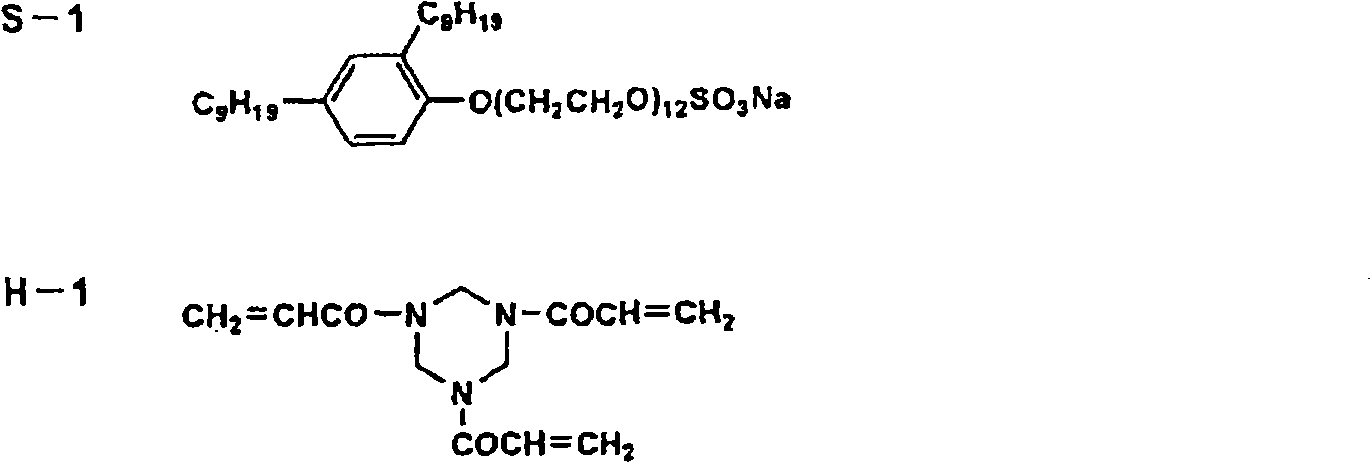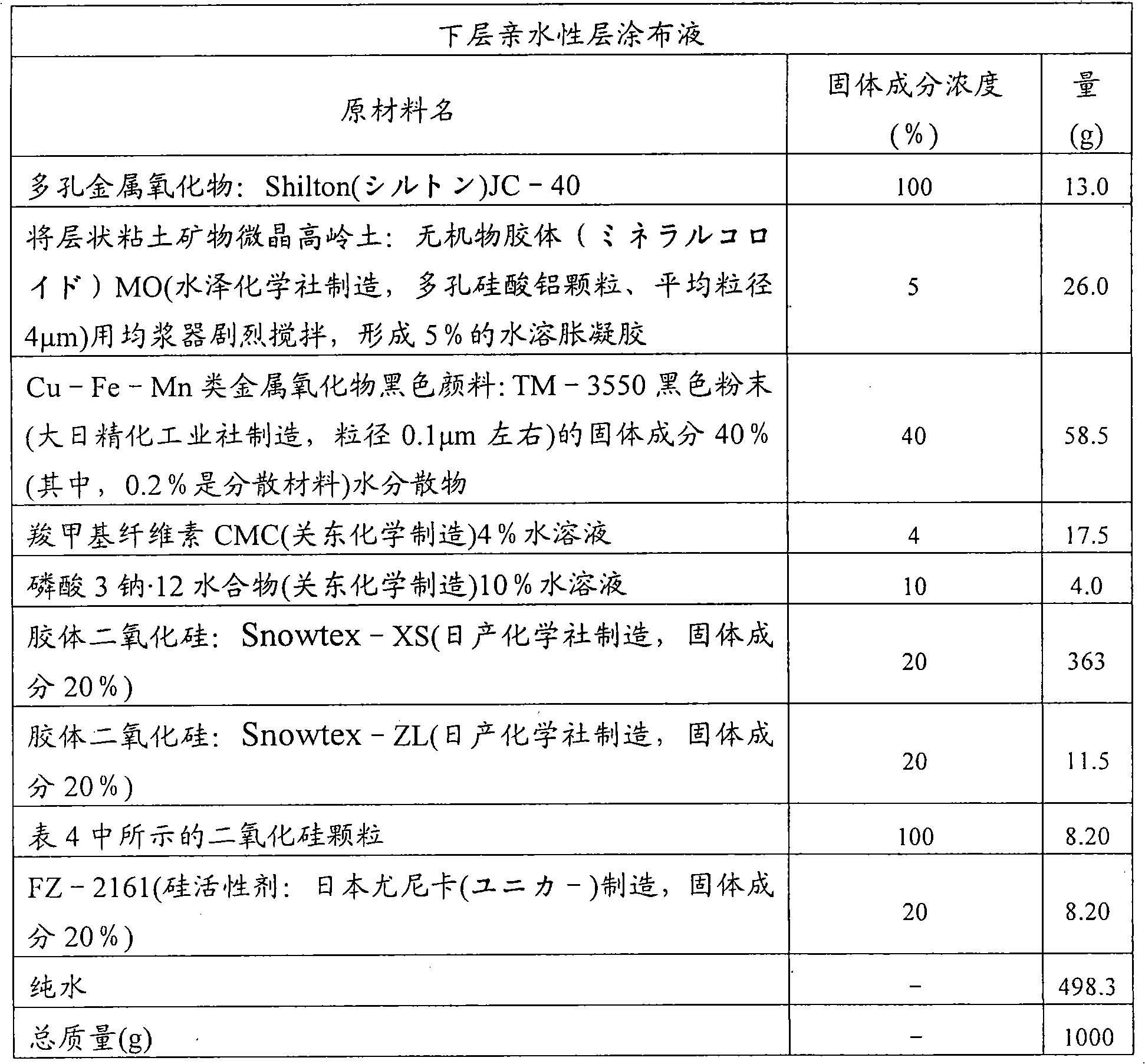Lithographic printing plate material and printing method
A lithographic printing plate and base material technology, applied in lithographic printing equipment, printing, printing technology, etc., can solve the problems of insufficient machine development, insufficient recovery of turbidity, and turbid printing adaptability, etc., and achieve good water width adjustment , Good ink adhesion and excellent developability
- Summary
- Abstract
- Description
- Claims
- Application Information
AI Technical Summary
Problems solved by technology
Method used
Image
Examples
Embodiment
[0192] Hereinafter, although an Example demonstrates this invention, this invention is not limited to these Examples. In addition, "parts" in the examples mean "parts by mass", and % means mass % unless otherwise specified.
[0193] (Preparation of Substrate 1)
[0194] (PET resin)
[0195] 0.05 parts by mass of magnesium acetate hydrate was added as a transesterification catalyst to 100 parts by mass of dimethyl terephthalate and 65 parts by mass of ethylene glycol, and transesterification was performed according to a conventional method. 0.05 parts by mass of antimony trioxide and 0.03 parts by mass of trimethyl phosphate were added to the obtained product.
[0196] Then, the temperature was raised slowly, the pressure was reduced, and polymerization was carried out at 280° C. and 67 Pa to obtain polyethylene terephthalate (PET) with an intrinsic viscosity of 0.70.
[0197] Using the PET resin obtained as above, a biaxially oriented PET film was produced as follows.
[019...
PUM
| Property | Measurement | Unit |
|---|---|---|
| particle size | aaaaa | aaaaa |
| particle size | aaaaa | aaaaa |
| particle size | aaaaa | aaaaa |
Abstract
Description
Claims
Application Information
 Login to View More
Login to View More - R&D
- Intellectual Property
- Life Sciences
- Materials
- Tech Scout
- Unparalleled Data Quality
- Higher Quality Content
- 60% Fewer Hallucinations
Browse by: Latest US Patents, China's latest patents, Technical Efficacy Thesaurus, Application Domain, Technology Topic, Popular Technical Reports.
© 2025 PatSnap. All rights reserved.Legal|Privacy policy|Modern Slavery Act Transparency Statement|Sitemap|About US| Contact US: help@patsnap.com



